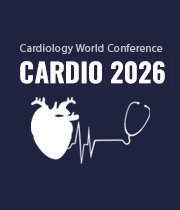Title : Minimal invasive pediatric and adult congenital cardiac surgery
Abstract:
Full midline sternotomy remains the most common incision to correct congenital cardiac defects. Although many minimal invasive programs exist for the adult population worldwide, only a few centers have adopted such a program for the pediatric population. The rise of novel interventional cardiology techniques and the main advantages of earlier recovery and cosmesis, have prompted some groups to explore alternative approaches to median sternotomy. However, the steep learning curve and technical difficulties associated with minimally invasive procedures have discouraged many surgeons to opt for this approach as their new “gold standard”. Few reports have been published on starting such a program and in our opinion, the success is dependent on a step-by-step approach with attention to the full cycle of care. This includes preoperative awareness and screening to postoperative care where many reluctancies might be present based on inexperience and mostly fear of the unknown. We already have extensive minimal invasive surgical experience in the (congenital) adult population and used this knowledge when designing and developing the minimal invasive children’s program.
The presentation addresses specific conditions to correct minimally invasive, central cannulation possibilities, mid-axillary approach and optimal post-operative pain management. Minimal invasive pediatric surgeries are performed in our center starting from 5kg and encompass ASDII closure, partial abnormal venous return, partial AVSD to VSD closure without residual defects, no conversions and no other comorbidities. All cases were discharged around day 4 with a maximum stay of 1 night at the ICU. Pain management was optimized where early full mobilization was key.




